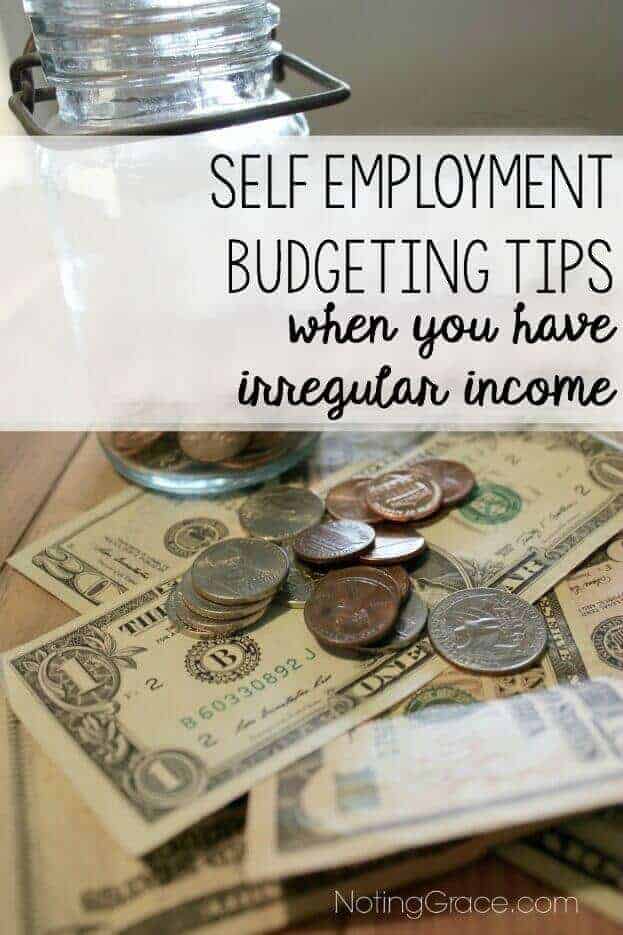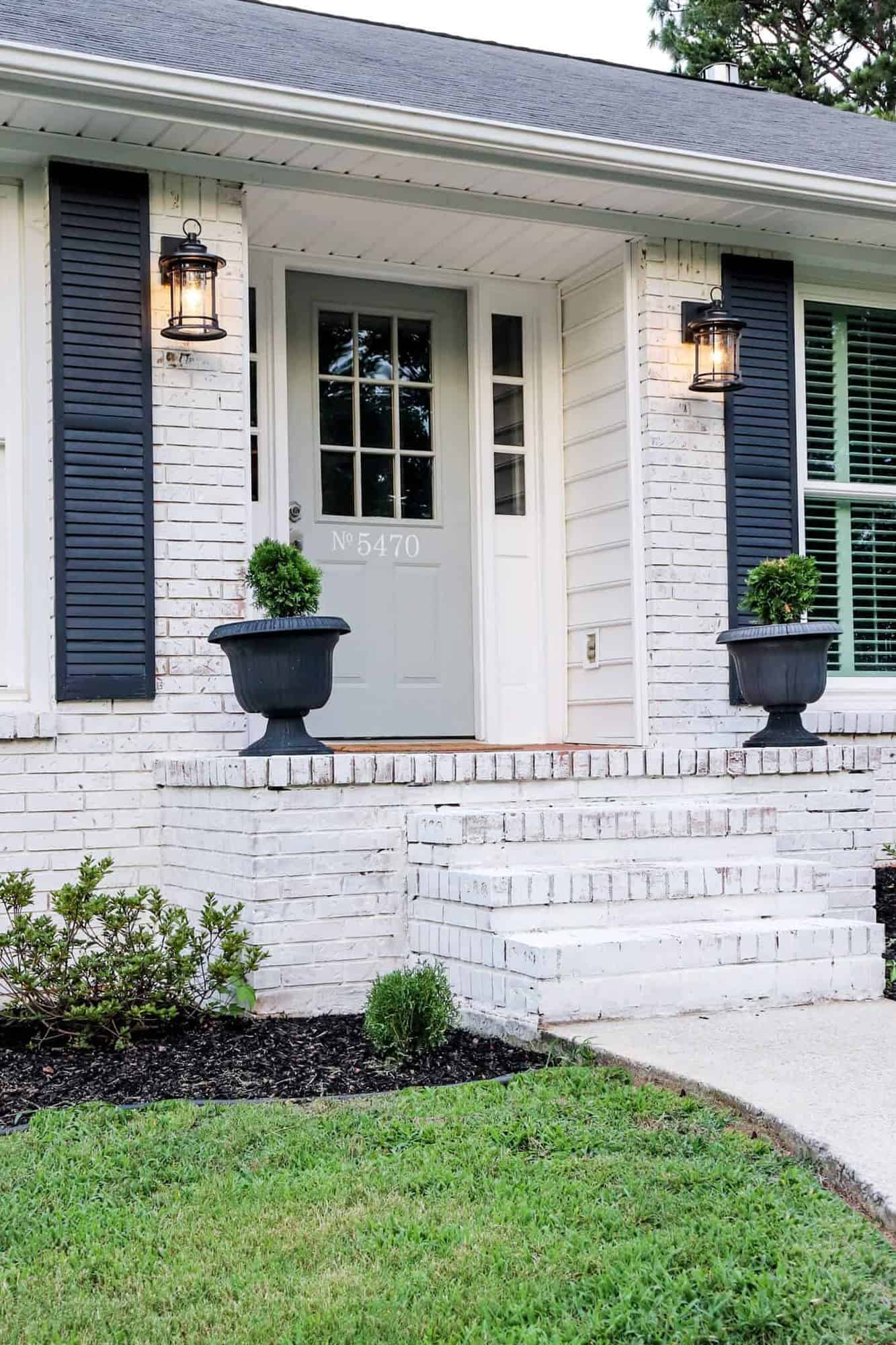EASY Self-Employment Budgeting with Irregular Income with a FREE Downloadable Worksheet
If you don’t receive paychecks on a consistent basis, you need to plan ahead. Here’s how to do self-employment budgeting with irregular income.

I’m coming clean – I’m irregular. No, I’m not talking about digestive issues, but something just as important: MONEY!!
For most of our married lives, Trent and I have been self-employed, working as contract for hire on various platforms, meaning we don’t get the weekly paycheck like most of America. So, we don’t have benefits or 401k plans that the company matches. All expenses come out of our pocket with that hefty self-employment tax rate.
One of my very first jobs when I graduated college was a brief stint as a receptionist for nationally syndicated Radio/TV show host Dave Ramsey. I worked there only a year, but that small window of time changed how we approach our money and ultimately set us on the right path financially for our job market.
So what is irregular income? It is an income flow that varies every month. Some months produce HUGE paychecks, while other months may have none. Freelancers, commissioned sales reps, seasonal worker all have this fluctuating income. As bloggers, we can see income ebb and flow each month and it makes it hard to plan for your expenses.
So how do you budget when the cash flow isn’t consistent? Typically, with dependable income, you assign a place for each dollar every month so you are spending your money wisely. But when there are months without a steady stream of income, it’s hard to work using that method. Here are our tips that have helped us stay out of debt during those lean months.
Self-Employment Budgeting with Irregular Income
Affiliate links are included for your convenience at no cost to you. You can read all the legal stuff here.

List All Your Expenses
Be specific – go through your bank statements and list every purchase your family makes. Then, divide your income into 3 categories: Essentials, Priorities, and Lifestyle.
Essentials (MUSTS): Housing and Utilities, Groceries, Health insurance and Transportation. Think of this category for what you absolutely need to survive. Obviously, you don’t have to have your car detailed every Friday or that cup of Starbucks each morning. This is bare bones budgeting.
Now, some of you skimp on your health insurance, but the number one reason most people go bankrupt is because of medical costs, so it is extremely important to have some form of coverage. We have opted for a Health Savings Account with a higher deductible.
Priorities (NEEDS): For example, if your job requires your own transportation, then you need to plan for car repairs, tags, title, license, etc. Any savings plan would also fall into this category, like retirement, or it could be a home repair. If you know you’re water heater is going to bust soon, then start planning for its replacement.
Lifestyle (WANTS): Entertainment money, eating out, gifts, vacation budget, even certain utilities like cable or cell phone. They are nice to have, but not necessary for survival.
Once you have your categories set up, now it’s time to work backwards.
Filling In Your Budget
Now that you know your expenses, put it down on paper. I created a spreadsheet of our expenses and I color code the expenses into categories to help me prioritize my budget. Blue for savings, green for cash based items, orange for expenses the business should cover, and red for debt – hopefully this is $0!
We do follow the envelope system, and I will share more details on that later this month.
Now here is where it gets tricky – and lemme warn you – math is involved. I hate math, but I love being a good steward of what I am given, so you just gotta do it.
For those non-monthly expenses – like car tag renewals, car insurance, or Christmas fund – I calculate out the cost per year, and then divide by 12.
example: If your car insurance is $600 a year, divide that by 12 and you get $50 a month you should budget for that expense. I’ll share more below on where I put that money.
Then, I save this as a BASE BUDGET sheet. That allows me to start fresh with each new month, and adjust for any extra expenses depending on income.
Once you know what you need to survive, set a base income line for that level. When it’s an off season month and you need to ration your savings, you feel more prepared to stay afloat financially.
Set up Multiple Checking Accounts
Lastly, it’s time to set some aside for emergencies. Some people say to start with $1000, but I cannot stress enough that on irregular income living, you need to set aside months of expenses to prepare for when the income isn’t coming in. Yes, that big check may pay for the new carpet you want, but in 3 months, when the check doesn’t come, you’ll hate that carpet when you can’t pay your heating bill!
I have 5 different checking accounts.
Yes, five.
They are:
A Business Checking Account: any and all purchases relating to our job go through this account and makes tax time much easier! My most favorite business tools is my Quickbooks Self-Employed Program. This has been a huge help with organizing my business expenses.
A quick note about taxes: self-employed individuals should pay quarterlies throughout the year. Here is a great article about Self-Employed taxes.
Our Main Checking Account: All our essential purchases are made from this account, like mortgage, utilities, etc.
A Budget Checking Account: This is for those irregular purchases, like car insurance. Remember that example from above. That is my amount I transfer every month into the budget account. When the bill is due, you have the money set aside and aren’t shocked when that hefty bill arrives. I plan for all licenses, taxes, car repairs, etc this way.
An Online Savings Account: This is for our emergency fund. It’s online so that it’s not easy or tempting to cash out. This is an account that you plan for, so if you know that next month will be tight, then you would transfer over from this account the amount you need for next months budget. This would also be where you would turn if a massive repair was needed, like a busted water heater. Because things happen – it’s best to prepare.
An Online Budget Account: I use this for the long term savings that would be too tempting to access if they were in my other account. So Christmas money, vacation planning, health deductibles etc. would be here. I use the same method for savings as my Budget Checking Account. Take your budget, divide it by 12 and save that amount here.
Give it Time to Work
It’s time consuming to get the ball rolling at first, and may take a few months to really get the hang of it, but it is so worth the adjustment that time takes when you see the savings you’ve accumulated in that short amount of time.
There will be instances, though, that even the best planning doesn’t always work out. Like last month, we were at the bottom of our savings barrel, lost our most reliable income stream, and were promised work on the horizon without a start date.
We had to trust, wait, and really, really cut back that month. Thankfully, we were only facing that crisis for that month, but we’ve seen times when it was a 3 month or 8 month wait and it’s always good to have a back up plan in place.
I hope this is an encouragement to get your finances under control and most of all help you feel not alone if you’re struggling. If you have any questions, take a moment and leave it in the comments below. We would love to connect with you!







Thank you so much for your sweet comment! It means so much to know that this was encouraging! Thanks for hosting!
Great tips. We did something similar when I stayed home after my oldest was born, especially because we needed a bigger house and had to budget carefully. After I went back to work we kind of lost the habit of listing all our expenses but after reading this – regular income or not – I’m thinking it would be useful to go back to it.
Thank you for sharing at The Really Crafty Link Party this week!